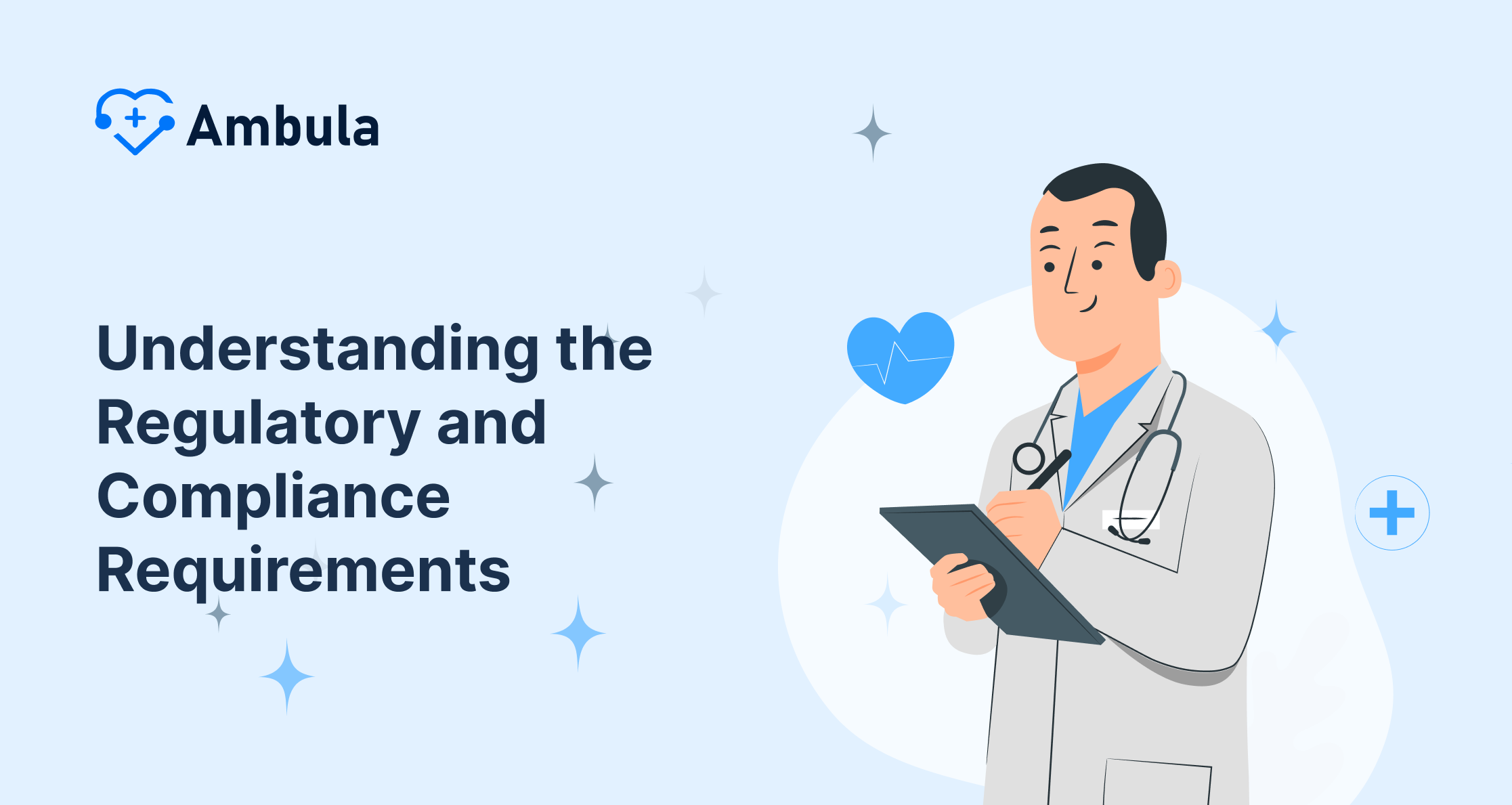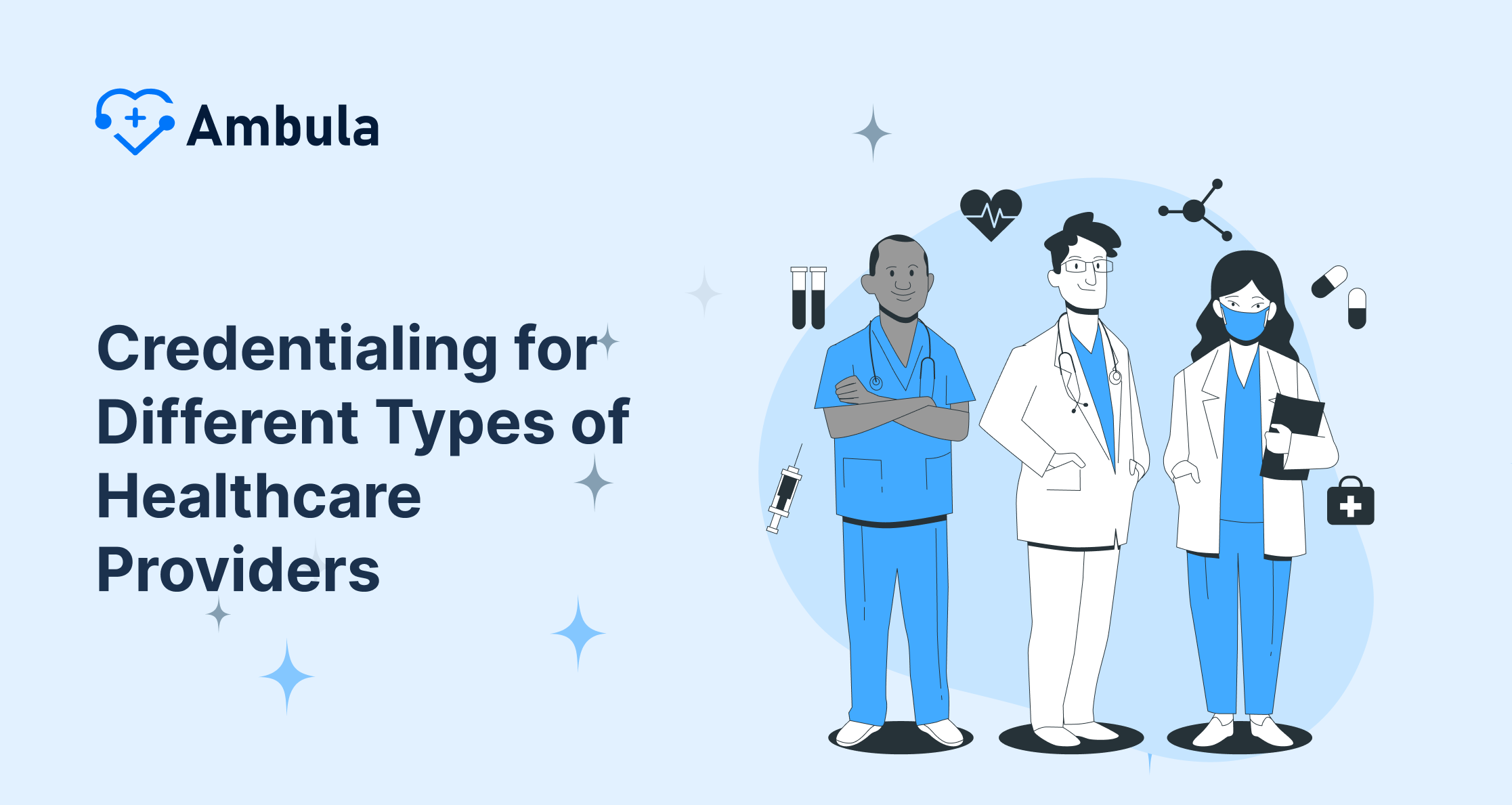Physician credentialing is the comprehensive process healthcare organizations undertake to verify doctors’ qualifications to practice medicine safely and effectively. While crucial for patient safety, it can feel like navigating a complex maze filled with frustrating delays. We’ve navigated the complexities and potential delays of physician credentialing. The good news? You don’t have to wander this maze alone! Here, we prepare a comprehensive checklist as your roadmap, outlining all the essential documents and information needed for credentialing. This ensures everything is in order and avoids delays caused by missing paperwork.
Understanding the Regulatory and Compliance Requirements
Physician credentialing is heavily governed by a range of regulatory and compliance requirements that vary by state and federal laws and accreditation standards. These regulations are designed to protect patients, uphold the quality of medical care, and ensure that healthcare providers are competent and fully qualified to perform their duties. Understanding these requirements is essential for any healthcare organization to ensure that their credentialing processes are effective and legally compliant. Here’s a deeper look at the key aspects of these regulatory and compliance requirements:
State Regulations
Each state in the U.S. has its own set of laws and regulations governing the licensing and credentialing of healthcare providers. These regulations ensure that providers practicing in the state meet specific qualifications and standards. State medical boards are responsible for setting these standards, which can include specific educational achievements, examination scores, and continuing education requirements. Healthcare organizations must be aware of and comply with these regulations to credential physicians appropriately.
Federal Requirements
On the federal level, various regulations influence physician credentialing. For instance, the Centers for Medicare & Medicaid Services (CMS) has specific requirements for providers who wish to participate in Medicare and Medicaid programs. These include standards for education, training, and the absence of disqualifying criminal offenses. Compliance with federal regulations ensures that healthcare providers are eligible for federal funding and reimbursement, a critical component of healthcare financing.
Essential Documents for Credentialing: The Basics
At the core of the credentialing process is the collection of essential documents. These include:
- Personal identification and contact information.
- Valid medical licenses and any applicable certification from recognized boards.
- Proof of educational qualifications, including degrees and certificates from medical schools.
These documents are the backbone of the credentialing application, verifying the physician’s identity and basic qualifications.
Advanced Documentation Needed
In addition to the basic documents, credentialing requires more detailed information to assess a physician’s qualifications and history thoroughly:
- Board Certifications: Demonstrating specialty qualifications and ongoing education.
- Malpractice History: Information on previous malpractice claims, if any, to assess the risk and integrity of the physician.
- Surgical Logs and Hospital Privileges: These provide evidence of practical experience and affiliations with accredited hospitals.
Credentialing for Different Types of Healthcare Providers
Credentialing in the healthcare sector is not a one-size-fits-all process. Different types of healthcare providers—ranging from physicians to nurse practitioners to physician assistants—each have specific credentialing requirements that reflect their distinct roles, responsibilities, and scopes of practice. Understanding these variances is crucial for ensuring that all healthcare providers are adequately vetted and qualified to offer care within their specific capacities.
Physicians: Credentialing is a comprehensive process for physicians that encompasses verification of medical education, residency, fellowships, board certifications, and state licenses. It also involves assessing malpractice history and any disciplinary actions taken against the physician. This thorough process ensures the physician is fully qualified to provide medical care at the highest standards.
- Email address
- Street address
- Phone number
- Recent photograph signed and dated
- Driver’s license or passport
- Social Security card (optional, depending on the state)
- Permanent Resident Card (Green Card) or visa status (if applicable)
- Copy of all current active state medical license wallet card(s) and wall certificate with expiration date and number
- National Provider Identifier (NPI) documentation and confirmation letter
- Copy of current Drug Enforcement Administration (DEA) registration and any applicable state controlled substance registrations
- Copy of current board certification(s), including the name of issuing board and dates of certification/recertification
- Copy of medical degree diploma and transcripts from an accredited medical school
- Proof of internship and residency program completion (if applicable)
- Documentation of fellowship or other additional training programs (if applicable)
- Current Curriculum Vitae (CV) with complete professional history in chronological order
- Work history, including all practice locations and employment affiliations
- Explanation of any gaps in employment history (if applicable)
- Hospital affiliations (if applicable)
Advanced Practice Registered Nurses (APRNs)
- Full name, contact details, and Social Security number.
- Copies of nursing diplomas and degrees, particularly advanced degrees relevant to their APRN role (e.g., Master’s or Doctoral degrees).
- Official transcripts from all educational institutions attended.
- Evidence of national certification in their APRN specialty (e.g., from the American Nurses Credentialing Center or the American Academy of Nurse Practitioners).
- Special certifications may also be required depending on the area of specialization, such as family, pediatric, geriatric, or psychiatric care.
- Copy of a current and valid state RN license and advanced practice license.
- Prescriptive authority documentation if applicable.
- Detailed resume or curriculum vitae outlining all clinical positions and roles.
- Proof of current professional liability insurance.
- Documentation of ongoing education credits required for maintaining licensure and certifications.
- Documentation of hospital or other clinical affiliations and the scope of practice permitted in those settings.
- Recommendations from other healthcare professionals, focusing on clinical competence and professional ethics.
Physician Assistants (PAs)
- Like APRNs, physician assistants also work closely under the supervision of physicians but can perform many of the same tasks as doctors in diagnosing and managing patient care. Credentialing for PAs includes :
- Full name, contact details, and Social Security number.
- Copies of diplomas from PA educational programs accredited by the Accreditation Review Commission on Education for the Physician Assistant (ARC-PA).
- Official transcripts documenting graduation and coursework.
- Proof of passing the Physician Assistant National Certifying Exam (PANCE) administered by the National Commission on Certification of Physician Assistants (NCCPA).
- Current NCCPA certification.
- Copy of a current and valid state license to practice as a PA.
- Any additional state-specific certifications are required for specialized areas of practice.
- Detailed resume or curriculum vitae that includes all employment history, especially in medical settings.
- Proof of current professional liability insurance, also known as malpractice insurance.
- Documentation of completed continuing medical education credits as required by the NCCPA for certification maintenance.
- Letters from healthcare professionals who can attest to the PA’s clinical skills and professional conduct.
Special Considerations for Non-U.S. Trained Providers
- Copies of all diplomas and certificates from medical schools attended, including any postgraduate training.
- Confirmation of ECFMG certification, which is required for all foreign medical graduates before they can enter a U.S. residency program or obtain a state medical license.
- Official transcripts and verification letters from all educational institutions attended were directly sent by the institutions to the credentialing bodies.
- Fifth Pathway Certificate (if applicable)For those who have completed a Fifth Pathway program recognized by the ECFMG.
- Documentation of passing the United States Medical Licensing Examination (USMLE) Steps 1, 2, and 3, or Comprehensive Osteopathic Medical Licensing Examination (COMLEX) scores for osteopathic physicians.
- Scores from an English language proficiency test such as TOEFL or IELTS, if required.
- Proof of legal ability to work in the U.S., such as a copy of the H-1B visa, J-1 waiver, or permanent resident card (Green Card).
- Copy of SSN card if already obtained.
- Evidence of eligibility for or possession of a medical license in the state where they intend to practice, which may include additional state-specific examinations or requirements.
- Detailed CV or resume that includes all clinical training and work experience, particularly in the U.S. or comparable healthcare systems.
- Letters of Recommendation: At least three letters from physicians or healthcare professionals who have directly supervised the candidate in a clinical setting, preferably within the U.S.
- Criminal Background checks may be required depending on state regulations and employer policies.
- A report of any malpractice claims or disciplinary actions taken against the provider in any country where they have practiced.
The Role of Technology in Streamlining Credentialing
With technological advancements, many insurance companies and healthcare organizations now utilize centralized databases to manage the credentialing process more efficiently. Digital platforms and services like Verisys can significantly reduce the time spent on credentialing by facilitating quicker data verification and submission processes.
Centralized Databases
One of the major technological advancements in credentialing is the use of centralized databases that store and manage provider information. These databases allow different healthcare entities and insurance companies to access a common data set, eliminating the need for providers to submit the same information multiple times to different organizations. For example, the Council for Affordable Quality Healthcare (CAQH) offers a centralized online database where providers can enter their credential information once and authorize its use by any participating organization. This speeds up the credentialing and re-credentialing processes and reduces errors associated with manual data entry.
Cloud-based Credentialing Software
Cloud-based credentialing software transforms how healthcare organizations manage medical professional credentialing and verification. This software offers scalable solutions that can be accessed remotely, providing real-time updates and secure data storage. The cloud infrastructure supports large data volumes and complex workflows, making it ideal for managing the diverse and extensive data involved in credentialing. It also facilitates collaboration among different departments or healthcare organizations, enhancing transparency and communication.
Periodic Re-Credentialing and Its Significance
Credentialing is not a one-time process. Physicians must undergo re-credentialing every 2-3 years to ensure they continue to meet the necessary standards. This periodic review is crucial for maintaining the integrity of healthcare practices and adapting to changes in medical standards or regulations.
Periodic re-credentialing ensures compliance with state laws, federal regulations, and standards set by accreditation bodies such as the Joint Commission or the National Committee for Quality Assurance (NCQA). These regulations often require healthcare providers to undergo re-credentialing every two to three years. Compliance helps healthcare facilities avoid legal liabilities and penalties for employing non-compliant staff. It also reassures patients and their families that the healthcare facility adheres to rigorous safety and care quality standards.
Insurance and Reimbursement Requirements
Healthcare providers must be credentialed and re-credentialed periodically to be eligible for reimbursement from insurance companies, including Medicare and Medicaid. Insurance providers, including physicians and other healthcare providers in their networks, require up-to-date credentials to authorize. This process is crucial for the financial stability of healthcare practices, as it directly affects billing privileges and the ability to receive payments for services rendered.
Common Pitfalls and How to Avoid Them
Physician credentialing is a complex and detail-oriented process that, if not managed properly, can lead to several common pitfalls. These pitfalls can delay the credentialing process, potentially costing healthcare facilities and providers both time and revenue. Here’s a detailed look at some of these common issues and strategies to avoid them:
1. Incomplete Applications: One of the most frequent obstacles in the credentialing process is submitting incomplete applications. Missing information can significantly delay the approval process as the application must be returned to the provider for completion.
- How to Avoid:
- Utilize checklists to ensure all required information is gathered before submission.
- Implement a double-check system where more than one person reviews the application for completeness.
2. Outdated Documentation: Credentialing requires current and valid documents. Outdated licenses, certifications, or insurance information can invalidate an application or lead to its rejection.
- How to Avoid:
- Regularly update and review credential files to ensure all documents are current.
- Set reminders for expiration dates on critical documents like professional licenses and malpractice insurance.
3. Errors in Application Forms: Typos, incorrect data entries, and other errors in application forms can cause unnecessary delays in the credentialing process.
- How to Avoid:
- Encourage detailed reviews of all forms by the applicants themselves and a credentialing specialist.
- Employ software that includes form validation features to catch common data entry errors.
Final Thoughts
Though rigorous and sometimes daunting, physician credentialing is a fundamental part of maintaining healthcare standards. A well-organized credentialing process is crucial for healthcare organizations to maintain high standards of care, ensure compliance with regulatory requirements, and facilitate the seamless onboarding of healthcare providers. This process verifies healthcare professionals’ qualifications, training, and experience, ensuring that they meet all necessary standards to provide safe and effective care. Moreover, effective credentialing supports the financial stability of healthcare facilities by ensuring that providers are eligible for insurance reimbursements.
Credentialing also plays a vital role in protecting patients by reducing the risk of medical errors and enhancing patient trust in healthcare institutions. A streamlined and thorough credentialing process can prevent significant legal and financial consequences from employing unqualified or inadequately vetted personnel.
About the Author: Mousa Kadaei
Related Posts
Elevate your practice to the next level
Let us show you how to save 2 hours a day.







